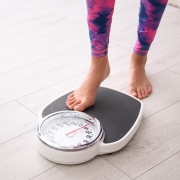As the world and workplace grow increasingly digital, it can be difficult to find time to truly relax or experience the benefits of resting. You might leave the office at five, but with smartphones and laptops, there’s always one more email to send or one last bit of work to finish up before dinner. It’s exhausting.
Add social media into the mix and there’s hardly any time left for rest, recreation, and relaxation. And, as it turns out, these activities play a crucial role in regulating your mental, emotional, and physical well-being.
Rest and relaxation can take a variety of shapes—it’s not all about sleep or going on vacation (although those are great ways to practice self-care). Everyone relaxes a little differently. To really see the benefits of resting in your own life, you’ll have to figure out what helps you relax. That’s where this article comes in.
Understand the Importance of Rest and Relaxation Through the Benefits of Resting
The demands of a career, relationships, or life in general can occasionally be stressful. But with a little practice, you’ll be able to avoid falling into the stress spirals in your life. And even if they do crop up occasionally, you’ll know exactly how to deal with them.
You know that old saying, “an ounce of prevention is worth a pound of cure”? Well, that same logic applies to stress. In other words, it pays to be proactive. And here’s the best part: One of the easiest ways to prevent stress is through rest and relaxation.
In the past few years, a number of companies around the world have put this approach to the test with four-day workweeks. The idea is pretty simple: if employees are expected to work one fewer day (without any impact on their salary) they’ll be more relaxed, healthier, and more productive. And it works.
It turns out that taking the time to truly relax and rest can impact your life and health in a number of positive ways. Some of the benefits of resting include:
- Increased energy levels
- Greater productivity
- Lower reported stress levels
- Greater sense of fulfillment and satisfaction in life
To see some of these benefits in your own life, you’ll need to find a relaxation method that works for you. But don’t worry, you’ve got a lot of options to choose from—and relaxation can come in unexpected ways!
Recreation as Relaxation: The Double Benefits of Physical Activity
People often think of relaxation as passive. That is, they think you’re relaxing when you’re not really doing anything. Or not doing anything demanding, at least. And while that line of thinking isn’t necessarily wrong, it leads people away from one of the most effective forms of relaxation: exercise.
It might seem a little counterintuitive that physical activity can be restful, but there’s science to back it up. (It’s important to note that exercise rests your mind, not your body.)
You’ve likely heard of a “runner’s high.” It’s the rush of euphoria that many runners, whether they’re amateurs or old pros, describe. This so-called high occurs as your body releases endorphins, a natural response to prolonged exercise. These endorphins—chemicals secreted by the pituitary gland—can help keep you feeling good despite the state of your daily life.
Exercises such as swimming, running, or simply walking can also provide an almost meditative experience. As your body repeats motions over and over again, your mind is allowed to wander freely. Your brain enters a state known as the default mode network, which is a crucial time of rest for your brain.
If your recreation takes you into nature, you’ll see even more benefits. Studies have shown that a walk in the park or a hike in the woods can do wonders for your stress levels.
Keeping Your Mind Healthy: 6 Additional Relaxation Techniques
Physical exercise can be a great way to rest your mind, but, let’s be honest, not everyone has the time or energy to get out and exercise every day. If you’re not big on running, don’t worry—there are plenty of other ways to relax and give your mind the rest it needs. You could, for instance, try one of a variety of relaxation techniques.
If you’ve ever taken a deep breath and counted to 10, you’ve already dabbled in the world of relaxation exercises. These techniques are basically exactly what they sound like: practices that, when executed properly, can help you relax your body and mind. The similarities to meditation are unavoidable. That’s because many relaxation techniques are considered forms of meditation and vice versa.
There are countless types and variations of relaxation techniques. And if you decide to integrate intentional relaxation into your daily life, you’ll have plenty of time to explore those options. But for now, you might find it helpful to start by trying out these six basic types of relaxation techniques:
- Breathing exercises: Controlling your breath is one of the easiest ways to manage stress. It’s also a great entry point into the world of more advanced meditation techniques. There are a number of ways to practice controlling your breath, but most breathing exercises follow a similar pattern: breathe in slowly, hold, breathe out slowly. The goal is to make your breathing more controlled, consistent, and intentional. Breathing exercises can help you clear your mind and feel more in tune with your body and its needs.
- Progressive relaxation: As one of the most popular relaxation techniques, progressive relaxation is taught and practiced in the military, many meditation clinics, and even some schools. Progressive relaxation begins with breath control. Once your breath reaches a slow and steady cadence, you will begin to tense and relax various muscle groups in turn. You start with your toes and move up your body towards your head. Each time you release muscle tension, you exhale, expelling mental tension out of your body, too. If you’re a beginner, there are lots of great resources for guided progressive relaxation online!
- Autogenic relaxation: This relaxation technique is a bit of a catch all for a variety of approaches. All this category entails is using your mind and body control to change automatic body processes—slowing your heart rate, for instance. Autogenic relaxation often begins with breath control and might incorporate elements of visualization. The end goal is pretty simple: through your own awareness of your body, you are able to influence your heart rate, breathing, and other systems to help deal with stress.
- Visualization: This technique exercises your imagination. Visualization is the practice of imagining a soothing scene or place, with as much sensory detail as possible. When you begin practicing visualization, you might find it useful to enlist online help. These resources will talk you through the process, telling you what setting to picture and what senses to pay special attention to. The more you practice, the better you’ll become at rendering these scenes without prompting. Like many other relaxation techniques, visualization can help regulate breathing, heart rate, and other bodily responses to stress.
- Mindfulness: One of the biggest stressors in the workplace is the urge to always look ahead. What projects are due next? What emails do you need to send tomorrow? And in a fast-paced work environment, a little forethought is crucial. But it’s also important to focus on the present. Mindfulness is a type of meditation in which you regulate your breathing and try to focus solely on the present moment. What thoughts are coming to your mind? What sensations can you feel? Each experience is acknowledged, but not judged—you’re simply existing in the moment.
- Yoga: At this point, you’re probably familiar with yoga. This popular recreational practice combines many of the various relaxation methods discussed in this article: breath control, physical exercise, and mindfulness. Though yoga is a physically strenuous activity, many practitioners find it incredibly relaxing. Yoga is a great way to feel more connected to your body and relax. And, as an added bonus, it’ll help you increase your core strength and flexibility!
Harnessing the Benefits of Rest
After a long, busy day, sometimes just kicking back and watching Netflix seems like the best way to relax. Or maybe scrolling mindlessly through Instagram for an hour or two. While there is a time and a place for those activities, you should not mistake them for proper rest or relaxation.
To really see the benefits of rest in your own life, you have to take an active approach. Get outside and walk for an hour one evening. Maybe try incorporating 15 minutes of mindfulness meditation before bed each night. Your brain needs a break from the stress of the day as much as you do—be sure you’re giving yourself the rest you need to thrive.
































